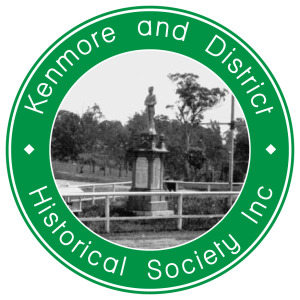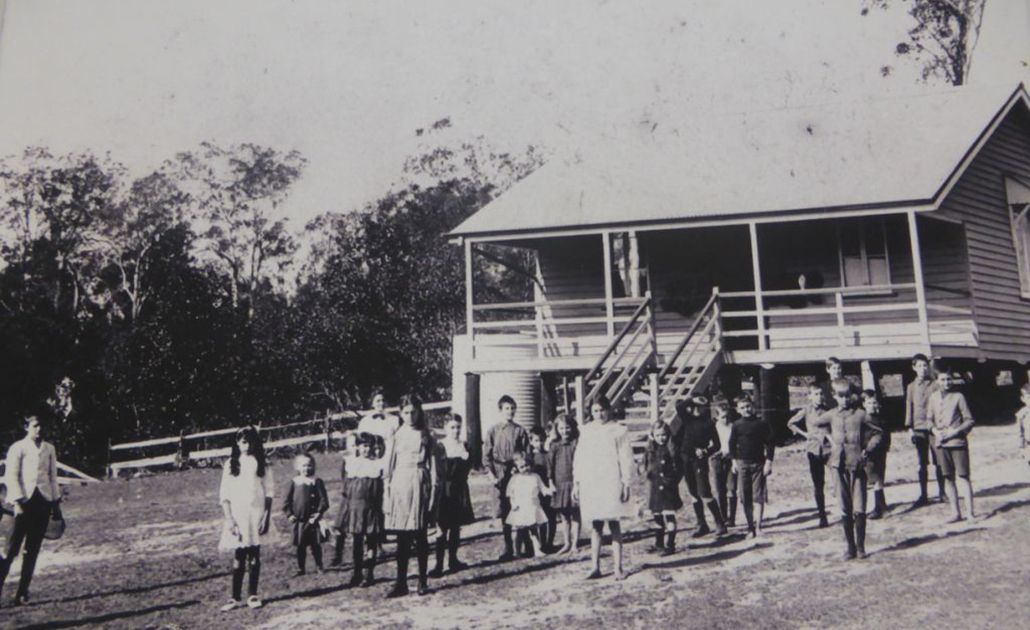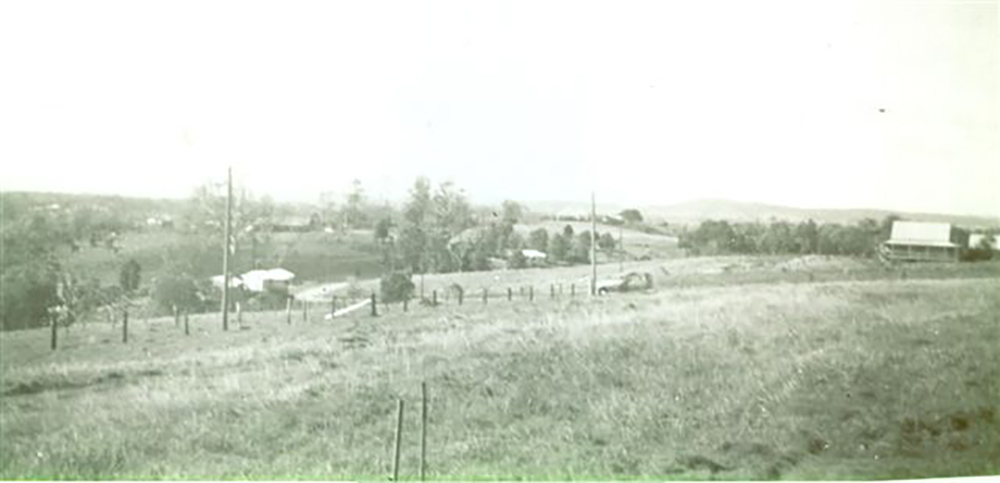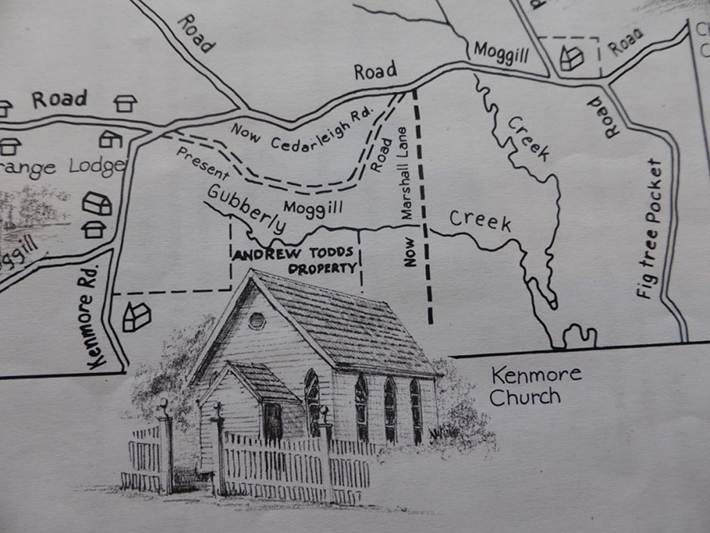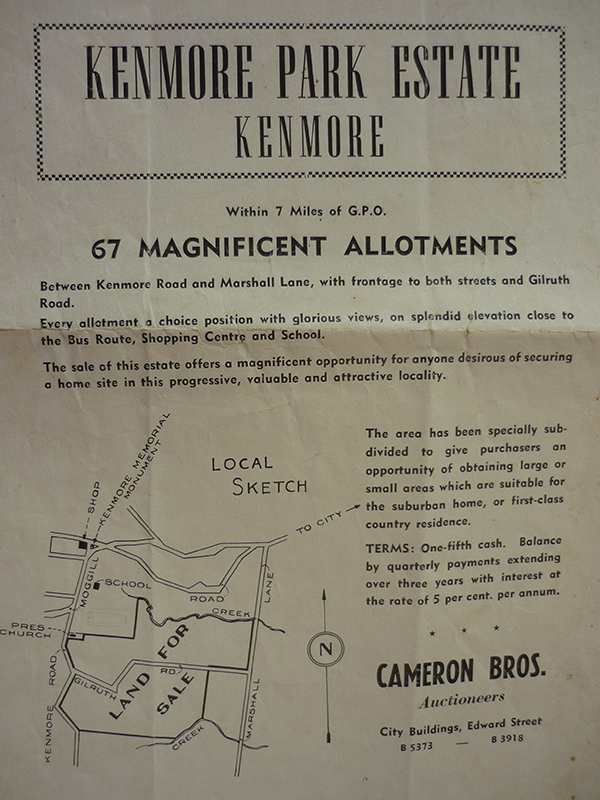Kenmore Local History
The Indigenous people of the broad area are the Jagera and Turbal groups. There have been archaeological remains recorded including stone axe heads and sharpening stones. A number of bora rings have also been recorded from Fig Tree Pocket to Bellbowrie. Some place names derive from Indigenous language; Moggill comes from ‘Magil’ meaning water dragon and Bellbowrie means ‘place of flowering gums’. (Courtesy Cr Margaret de Wit.)
Kenmore has two quite distinct European historic periods. The first is farming and market gardening and the second is suburban development. This is evidenced through enrolments at Kenmore State School. From 1900 to 1955 it was a one-teacher school with an average attendance of 30 pupils. In 1960 the attendance jumped to 100 – and by 1970 there were 737 pupils at the school.
The early period of European settlement began in the 1840’s. The area was surveyed in the 1850’s and after the establishment of the colony of Queensland in 1859, was released for sale in 15 – 20 acre lots to the wave of new settlers arriving from Britain. The earliest land holders were John McGrath and J. Twine who were both living on their selected land as early as 1849.
Other early families where the Paceys, who rented the land in Pullenvale/Pinjarra Hills; and Andrew Todd, who purchased 100 acres of land on either side of what is now Gilruth Road.
During the 1850’s and 1860’s the pine, cedar, softwood and hardwood around the Kenmore and Brookfield area was the source of much of Brisbane’s timber. It was drawn by bullock wagons along what is now Rafting Ground Road, floated down Moggill Creek to the river, and rafted to the sawmills near the present day William Jolly Bridge. Later a sawmill was in operation on the corner of Gap Creek Road and Brookfield Road.
There were also small farms in the area, producing a variety of crops. Potatoes, maize, arrowroot, sugar, grapes, pineapples and other fruits and vegetables were grown. Cotton was also grown and supplied to the Lancashire cotton mills during the time of the American Civil War when US cotton production was disrupted.
In the 1860’s there were few roads, so one of the most convenient forms of transport and communication was the river. There was a small fleet of steamers carrying goods and passengers between Brisbane and Ipswich. Also the farmers along the river used small flat-bottomed boats which were rowed with oars to take their produce to markets in Brisbane and Ipswich.
About 1880 Andrew Todd bought 100 acres of land in the centre of present day Kenmore. He built a large home and named the property ‘Kenmore Park’, after his home town of Kenmore in Perthshire, Scotland. Andrew Todd gave the Presbyterians half an acre of his property to build a church. It opened in October 1885. The Kenmore congregation, led by the Reverend William Patterson, had held services in a small hall on the banks of Moggill Creek, built by the Orange Lodge in 1871. The first church was used until the size of the congregation grew too large, and the present Uniting Church was built in 1967.
The earliest school in the district was a private school operated by Mr Storey in the 1870’s in the Orange Lodge Hall. In the 1880’s, the lodge like the church, moved to a more central site and built a larger hall in Moggill Road. This was used for another private school until Kenmore State School was established in 1900. The first school building was erected on the present site in 1905. An early school mistress was Miss Bessie Palmer, sister of author and playwright, Vance Palmer.
In the time when all transport was horse drawn there needed to be blacksmiths forges. In about 1900 there were two in Kenmore, one on the corner of Brookfield Road and Moggill Road and another opposite, where the old fire station now stands.
The earliest store in the area was also on the corner of Moggill and Brookfield Roads. It was opened in 1919 by Mildown and Cox, and was called ‘Hyde Park’.
Dairying began to play a large part in the local economy in the early 1900’s. One was run by the Pacey family. They used to get 9 pence a gallon on their “warm milk run” and sent surplus supplies by rail from Indooroopilly to the Booval butter factory.
Up until 1930, when the Brisbane Abattoirs were established, there were five slaughter yards in the Kenmore area. These included Lisk’s in Huntingdale Street (then Pullenvale Road); Irish’s, who had 60 acres at Wongabel; Land’s at Chapel Hill and Dobson’s at Fig Tree Pocket (now Cliveden). Joe Lisk was killed in an accident and his widow married Penhaligon. This is how the Penhaligon family became butchers.
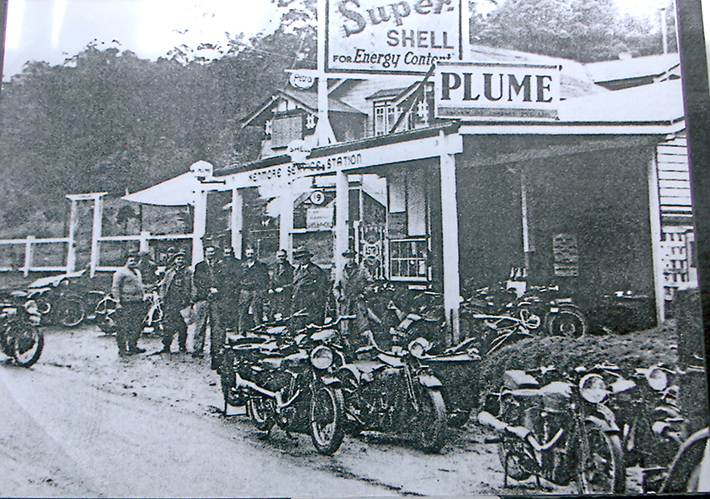
The first Kenmore Service Station photographed in 1938, located on the corner of Moggill and Cedarleigh roads.
For about 25 years from 1910 Chinese market gardeners worked on the small flats along Cubberla Creek growing vegetables.
In 1947 John Morgan bought and named Wongabel Estate from Jack Irish and kept racehorses on it.
In the early 1950’s Hooker’s bought land around Dumbarton Drive, which had formed part of Stack’s dairy farm. It was about this time that the modern development of Kenmore really began. Kenmore Park Estate went on the market with 67 allotments in December 1953 with further estates following. The last significant sale of land is thought to have been the cattle yards, on the site of the current Kenmore Tavern.
Major upgrade to dirt roads took place in the 1960, including Moggill Road and its intersection with Brookfield Road. Earth works for the Village shopping centre began in the late 1960s. The ambulance centre was opened in 1972, the fire station in 1975 and the police station in 1978.
(Courtesy Indooroopilly Library 1987)
